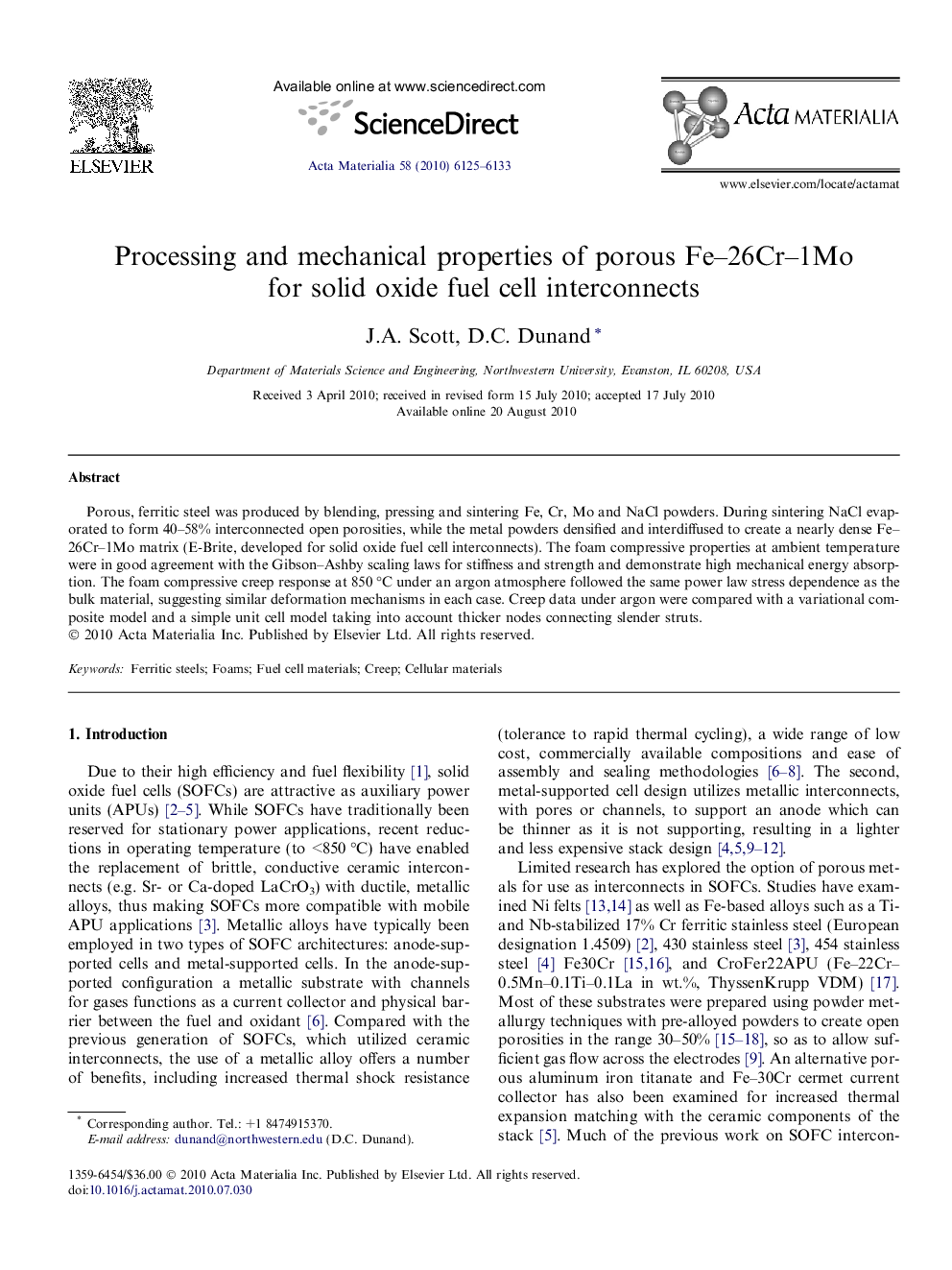| Article ID | Journal | Published Year | Pages | File Type |
|---|---|---|---|---|
| 1447587 | Acta Materialia | 2010 | 9 Pages |
Porous, ferritic steel was produced by blending, pressing and sintering Fe, Cr, Mo and NaCl powders. During sintering NaCl evaporated to form 40–58% interconnected open porosities, while the metal powders densified and interdiffused to create a nearly dense Fe–26Cr–1Mo matrix (E-Brite, developed for solid oxide fuel cell interconnects). The foam compressive properties at ambient temperature were in good agreement with the Gibson–Ashby scaling laws for stiffness and strength and demonstrate high mechanical energy absorption. The foam compressive creep response at 850 °C under an argon atmosphere followed the same power law stress dependence as the bulk material, suggesting similar deformation mechanisms in each case. Creep data under argon were compared with a variational composite model and a simple unit cell model taking into account thicker nodes connecting slender struts.
